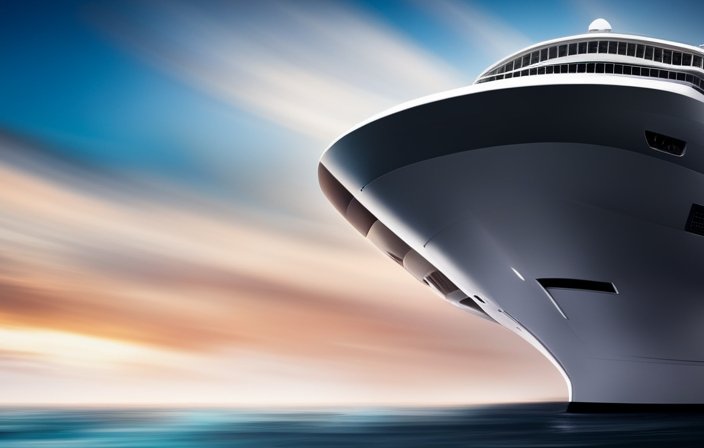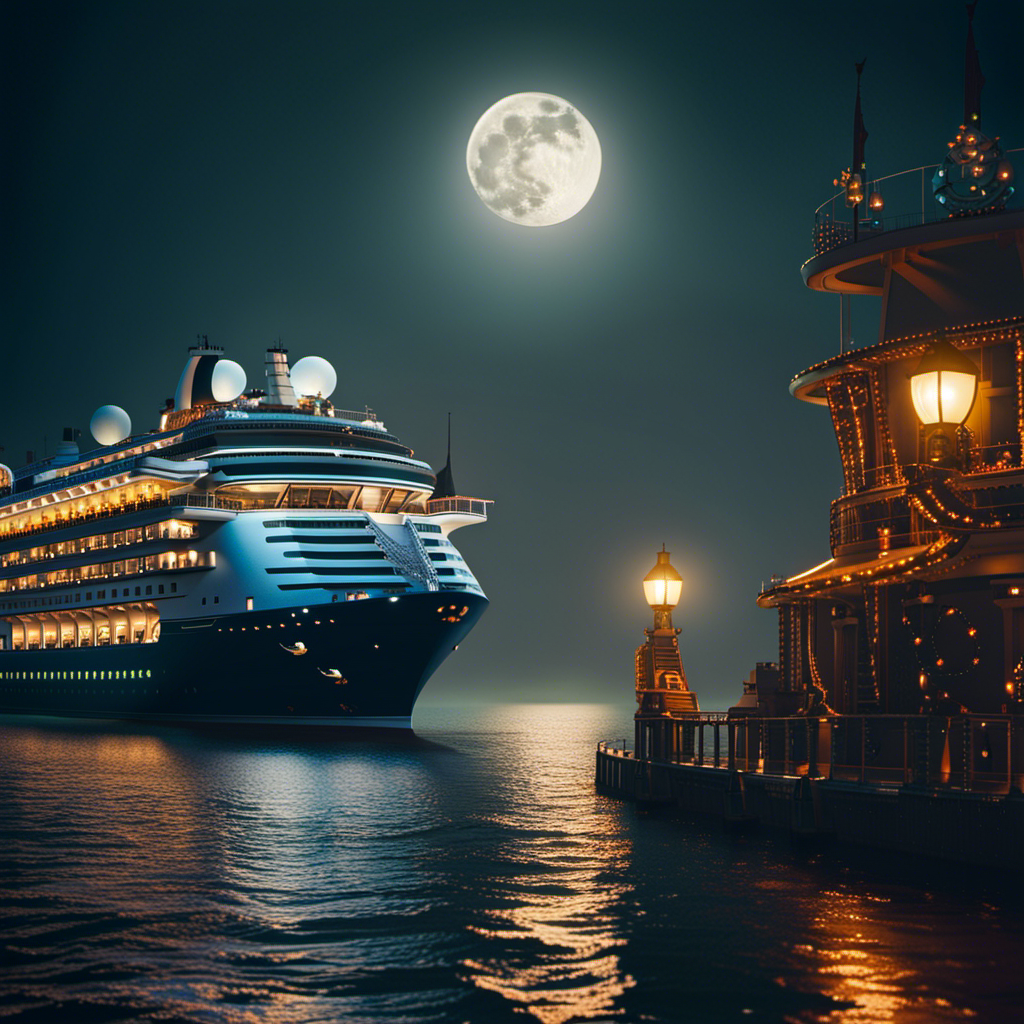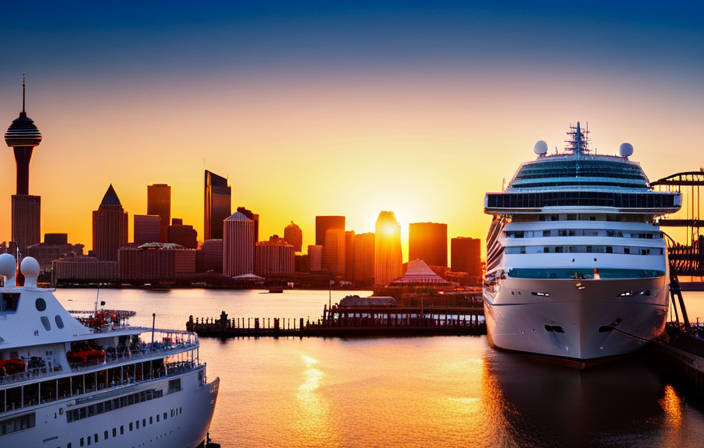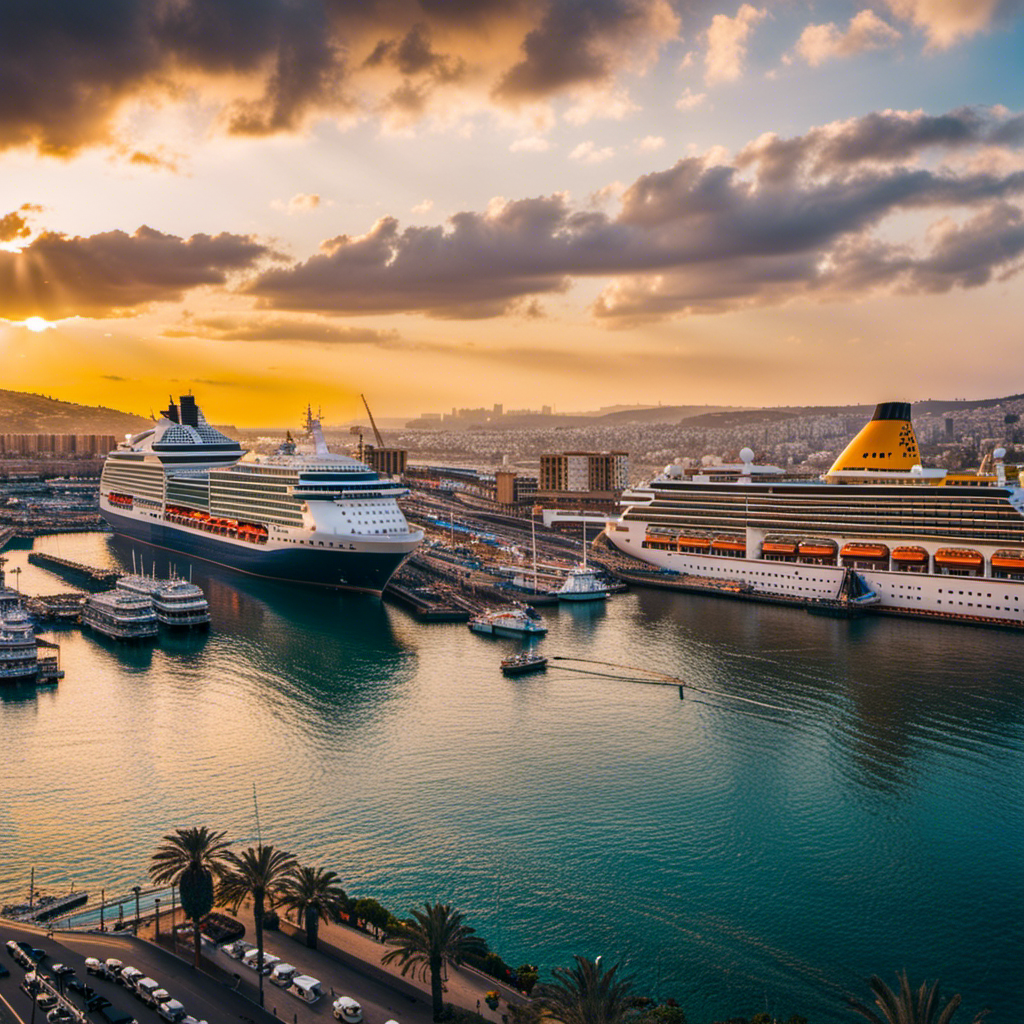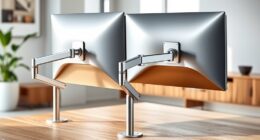Traveling across the vast ocean offers an escape into a world of opulence and extravagance. However, inexplicably, as soon as I step foot on the lavish cruise ship, my feet start to swell. Why does this happen? This mystery has puzzled numerous adventurers, including myself.
In this article, we will dive into the world of edema, the condition responsible for those puffy ankles and tight-fitting shoes. We’ll explore the causes, from prolonged sitting or standing to high sodium intake and dehydration.
I’ll reveal the secrets to managing this pesky problem, including the benefits of compression socks and smart footwear choices. We’ll also discuss how excessive alcohol and caffeine consumption can exacerbate swelling, and how to make better dietary choices to reduce salt intake.
And finally, we’ll touch on when it’s time to seek medical attention for severe edema. So, let’s embark on this journey together and discover how to enjoy our cruises with less swelling.
Key Takeaways
- Choosing suitable footwear that allows for natural foot movement and promotes proper circulation can help minimize swelling on a cruise.
- Elevating your feet can improve circulation, reduce fluid retention, and provide relief for swollen feet.
- Simple massage techniques, such as circular motions and long sweeping strokes, can promote lymphatic drainage and reduce swelling.
- Avoiding excessive alcohol and caffeine consumption, managing salt intake, and staying hydrated can help prevent and manage swelling on a cruise.
Understanding Edema and its Causes
Understanding edema and its causes is important for managing and preventing this common condition. Edema, or fluid retention, occurs when excess fluid builds up in the body’s tissues. One potential cause of edema is the effects of medication. Certain medications, such as calcium channel blockers and corticosteroids, can lead to fluid retention and subsequently swollen feet. These drugs alter the body’s fluid balance, resulting in edema as a side effect. Understanding the potential effects of medication on your body can help you better manage and prevent edema.
In addition to medication, lifestyle factors also play a significant role in the development of edema. Prolonged periods of sitting or standing can contribute to fluid buildup in the lower extremities. When you sit or stand for long periods, gravity can cause fluid to pool in your feet and ankles, leading to swelling. It is important to be aware of the effects of prolonged sitting or standing and take steps to prevent edema.
Effects of Prolonged Sitting or Standing
Prolonged sitting or standing can have negative effects on our bodies. One particular area of concern is blood circulation in the lower extremities. When we sit or stand for long periods of time, blood can pool in the legs and feet. This can lead to reduced circulation and potentially cause swelling or discomfort.
Another factor to consider is gravity’s role in fluid distribution. Gravity can cause fluids to accumulate in the lower parts of the body, exacerbating the effects of prolonged sitting or standing. This can further contribute to issues with blood circulation and increase the likelihood of swelling or discomfort.
In summary, prolonged sitting or standing can negatively impact our bodies by affecting blood circulation in the lower extremities. This can lead to issues such as reduced circulation, swelling, and discomfort. Gravity also plays a role in fluid distribution, which can worsen these effects.
Reduced Blood Circulation in the Lower Extremities
When you’re on a cruise, your feet may experience swelling due to decreased blood circulation in the lower extremities. Prolonged sitting or standing can contribute to reduced blood flow, leading to fluid buildup and swelling in the feet and ankles.
This condition, known as edema, occurs because blood vessels in the lower extremities have to work against gravity to pump blood back up to the heart.
One way to reduce edema and prevent swelling is to stay active and avoid prolonged periods of sitting or standing. Regular movement helps stimulate blood circulation and prevents fluid from pooling in the lower extremities.
Additionally, wearing compression socks or stockings can provide external support to the blood vessels, aiding in blood flow and reducing swelling.
Understanding the impact of gravity on fluid distribution is essential in managing foot swelling on a cruise.
Gravity’s Impact on Fluid Distribution
Experience the fascinating effect of gravity on how fluid is distributed throughout your body.
When you’re on a cruise, gravity plays a significant role in causing your feet to swell. Fluid retention, also known as edema, occurs when excess fluid accumulates in the tissues.
In a standing position, gravity pulls fluid downward, causing it to pool in the lower extremities, particularly the feet and ankles.
The lymphatic system, which helps remove waste and excess fluid from the body, may become less efficient due to prolonged periods of sitting or standing. This can further contribute to fluid accumulation in the lower limbs.
Understanding the impact of gravity on fluid distribution can help you take proactive measures to reduce swelling during your cruise vacation.
Transitioning to the next section, it’s important to also consider the role of high sodium intake and dehydration in foot swelling.
High Sodium Intake and Dehydration
I want to discuss the role of sodium in fluid retention and the importance of staying hydrated on a cruise.
When we consume high amounts of sodium, our bodies tend to retain more water, leading to swelling and fluid retention.
It is crucial to stay hydrated on a cruise because the combination of high sodium intake from meals and the hot weather can increase the risk of dehydration.
The Role of Sodium in Fluid Retention
Excessive consumption of sodium can cause fluid retention, leading to swelling in various parts of the body, including the feet. Sodium plays a critical role in maintaining fluid balance, but consuming too much can disrupt this balance and result in excess fluid retention. To combat this, it is important to limit sodium intake and choose healthier food options. Opting for low-sodium alternatives and avoiding processed foods high in sodium can help. Staying hydrated is also crucial in maintaining fluid balance and reducing swelling. On a cruise, it is essential to drink plenty of water to prevent dehydration and further mitigate the risk of foot swelling.
Importance of Staying Hydrated on a Cruise
Quench your thirst like a desert oasis, for staying hydrated on a cruise is like a cool, refreshing oasis amidst the scorching sun. The importance of drinking water cannot be stressed enough when it comes to preventing dehydration.
Cruise ships are often equipped with various facilities and activities that can make you forget about your body’s need for hydration. However, it is crucial to remember that the hot weather, physical activities, and alcohol consumption can all contribute to dehydration.
Signs of dehydration include dry mouth, dark urine, fatigue, and dizziness. To avoid these symptoms, make sure to drink plenty of water throughout the day.
It is also important to note that limited movement and exercise opportunities can further exacerbate fluid retention and swelling in your feet.
Limited Movement and Exercise Opportunities
Limited movement and exercise options on a cruise ship can contribute to feet swelling. Due to the confined space and limited mobility, it’s easy to fall into a sedentary lifestyle while on board. Unlike on land, where you can walk or engage in various physical activities, being on a cruise ship often restricts your movement.
This lack of exercise can lead to poor circulation, causing fluid to accumulate in your feet and ankles, resulting in swelling. It’s important to be aware of this issue and find ways to stay active during your cruise.
In the next section, we will discuss how wearing compression socks and choosing appropriate footwear can help alleviate swelling and promote better foot health.
Compression Socks and Footwear Choices
Wearing compression socks and choosing the right footwear can help alleviate swelling and improve foot health on a cruise ship.
Compression socks: These specially designed socks apply pressure to the legs, promoting blood circulation and preventing fluid buildup, which can reduce swelling in the feet and ankles. They are readily available in various sizes and styles, ensuring a comfortable fit for everyone.
Proper footwear: Opting for shoes with good arch support, cushioning, and a wide toe box can provide better stability and reduce strain on the feet. Look for breathable materials and adjustable straps to accommodate any swelling that may occur.
Avoid high heels or tight-fitting shoes as they can restrict blood flow and exacerbate swelling. Instead, choose shoes that allow for natural foot movement.
By wearing compression socks and selecting suitable footwear, you can minimize foot swelling and discomfort during your cruise.
Transitioning into the next section, elevating your feet and utilizing massage techniques can further enhance foot relief.
Elevating Your Feet and Massage Techniques
When it comes to reducing swelling in your feet, elevating them can provide numerous benefits.
Elevating your feet can help improve circulation and reduce fluid retention, which are common causes of swelling.
Additionally, incorporating simple massage techniques into your routine can further aid in reducing swelling by promoting lymphatic drainage and increasing blood flow.
The Benefits of Elevating Your Feet
Resting with your feet up can provide a delightful relief for your weary feet. Not only does elevating your feet feel good, but it also offers several benefits for reducing swelling. By elevating your feet, you allow gravity to help with the circulation of blood and fluids in your legs, which can help reduce swelling and discomfort. Additionally, relaxing and taking the weight off your feet can help alleviate stress and tension, promoting overall relaxation. Another important aspect to consider is wearing proper footwear. Shoes that provide support, cushioning, and a comfortable fit can help prevent foot and leg swelling on a cruise. By incorporating relaxation techniques and wearing the right shoes, you can significantly reduce the chances of experiencing swollen feet while on a cruise. Transitioning to the next section, let’s explore some simple massage techniques to further reduce swelling.
Simple Massage Techniques to Reduce Swelling
One effective way to alleviate swelling and promote relaxation is by incorporating simple massage techniques into your routine. Massage techniques can help reduce swelling in the feet by improving circulation and lymphatic drainage.
One technique is to start by gently massaging the feet in circular motions, focusing on the areas where swelling is most prominent. Applying light pressure and using long, sweeping strokes towards the heart can also help reduce swelling. Additionally, using a massage oil or lotion can enhance the effectiveness of the massage.
It is important to remember to always massage in the direction of the heart to encourage proper circulation. By incorporating these massage techniques into your daily routine, you can effectively reduce swelling and promote overall foot health.
Transitioning into the next section, avoiding excessive alcohol and caffeine consumption can also help prevent swelling in the feet.
Avoiding Excessive Alcohol and Caffeine Consumption
To avoid excessive alcohol and caffeine consumption on a cruise, limit yourself to one alcoholic drink per hour. Consuming more can lead to dehydration and worsen swelling in your feet – a sobering fact that highlights the importance of moderation.
When it comes to maintaining a balanced diet and preventing foot swelling, here are some key tips to keep in mind:
- Stay hydrated by drinking plenty of water throughout the day.
- Opt for herbal tea or decaffeinated beverages instead of caffeinated options.
- Choose low-sodium foods to reduce water retention.
- Incorporate foods rich in potassium, such as bananas and avocados, to help regulate fluid balance.
- Avoid processed and sugary foods that can contribute to inflammation.
By following these guidelines, you can minimize the chances of swelling in your feet while on a cruise.
Speaking of managing salt intake and choosing low-sodium options…
Managing Salt Intake and Choosing Low-Sodium Options
Reducing salt intake and opting for low-sodium options can be a savvy choice for maintaining a healthy diet while enjoying your time at sea. A low salt diet can help manage fluid retention, which is one of the main causes of swelling in the feet during a cruise. Consuming excessive amounts of salt can lead to water retention in the body, causing the feet to swell.
To prevent this, choose low-sodium options when dining onboard and avoid adding extra salt to your meals. Opt for fresh fruits and vegetables, lean proteins, and whole grains, which are naturally low in sodium. Additionally, be mindful of hidden sources of salt, such as processed foods and condiments.
By being conscious of your salt intake, you can reduce the risk of swollen feet and enjoy a comfortable cruise experience. If, however, severe edema occurs, it is important to seek medical attention.
Seeking Medical Attention for Severe Edema
If you are experiencing severe edema, it is important to consult a healthcare professional. They can help determine the underlying cause of your extreme swelling and recommend appropriate medical treatments.
Medical treatments for extreme swelling may include diuretics, compression therapy, or in severe cases, surgery.
When to Consult a Healthcare Professional
When it’s time to seek medical advice for your swollen feet on a cruise, there are a few factors to consider. If you are experiencing severe edema and have tried home remedies without relief, it may be time to consult a healthcare professional. A medical examination can help determine the underlying cause of your swollen feet and provide you with professional advice on how to manage it.
It is particularly important to seek medical attention if you have other symptoms such as difficulty breathing, chest pain, or severe pain in your legs. These could be signs of a more serious condition that requires immediate attention.
Remember, a healthcare professional can help guide you through the appropriate steps to take for your specific situation. Moving forward, let’s explore the medical treatments for extreme swelling.
Medical Treatments for Extreme Swelling
Are your feet feeling like water balloons about to burst? Let’s dive into the medical treatments for extreme swelling and find relief for your painfully puffed-up feet.
When it comes to medical interventions for extreme swelling, there are a few options that you can consider. First, diuretics may be prescribed by your healthcare professional to help eliminate excess fluid from your body.
Second, compression stockings can provide support and improve circulation in your legs and feet.
Lastly, if the swelling is severe and causing significant discomfort, your doctor may recommend draining the excess fluid through a procedure called paracentesis.
While medical interventions can be effective, there are also natural remedies that you can try to reduce swelling, such as elevating your feet, staying hydrated, and avoiding salty foods.
By incorporating these treatments, you can enjoy your cruise with reduced swelling and discomfort.
Enjoying Your Cruise with Reduced Swelling
To fully savor your cruise experience, it’s crucial to find effective ways to reduce swelling in your feet. One of the best ways to prevent swelling is by staying active.
Engaging in activities like walking, swimming, or dancing can help improve circulation and prevent fluid buildup in your feet.
Additionally, wearing proper footwear is essential. Opt for shoes that provide adequate support and cushioning to minimize pressure on your feet. Avoid tight-fitting or high-heeled shoes that can restrict blood flow and contribute to swelling.
It’s also important to take breaks and elevate your feet whenever possible.
By following these simple steps, you can enjoy your cruise with reduced swelling and make the most of your time onboard.
Remember to consult with your healthcare provider before making any significant changes to your routine.
Frequently Asked Questions
Are there any specific foods or drinks that can help reduce swelling in the feet on a cruise?
To reduce foot swelling on a cruise, it’s important to avoid foods and drinks high in sodium and alcohol. Elevating and compressing the feet can also help by improving circulation and reducing fluid buildup.
Can certain medications contribute to foot swelling while on a cruise?
Certain medications, such as calcium channel blockers and nonsteroidal anti-inflammatory drugs (NSAIDs), may contribute to foot swelling while on a cruise. These drugs can affect fluid balance in the body, leading to edema.
Is it common for foot swelling to occur more frequently on certain types of cruise ships?
Yes, foot swelling can occur more frequently on certain types of cruise ships. This may be due to factors such as limited movement, prolonged sitting, and dehydration from the amenities and activities offered onboard.
Are there any natural remedies or home remedies that can help alleviate foot swelling on a cruise?
One interesting statistic is that over 80% of people experience foot swelling on cruises. Natural remedies like elevating your feet and using compression socks, along with home remedies like soaking your feet in cold water can help alleviate the swelling.
Can foot swelling on a cruise be a sign of a more serious underlying health condition?
Foot swelling on a cruise can be a sign of a more serious underlying health condition. It is important to consult a healthcare professional to determine the causes and appropriate treatment for foot swelling.
Can Swollen Feet be a Concern When Visiting Glacier Bay on a Cruise?
When considering a trip to Glacier Bay on a cruise, it’s important to be aware of potential issues like swollen feet. While cruise lines for Glacier Bay often provide ample opportunities for walking and exploring, it’s essential to take precautions to prevent and address any discomfort or concern with swollen feet during the trip.
Conclusion
In conclusion, if you experience swelling in your feet while on a cruise, there are several factors to consider.
-
Prolonged sitting or standing, high sodium intake, limited movement, and excessive alcohol or caffeine consumption can all contribute to edema.
-
However, by wearing compression socks, choosing the right footwear, managing salt intake, and seeking medical attention when necessary, you can enjoy your cruise with reduced swelling.
-
Interestingly, studies have shown that up to 60% of people experience some degree of edema while on a cruise.
So, it’s important to take steps to prevent and manage this common condition.
Claire, a creative soul with an unquenchable thirst for storytelling, is an integral part of the Voyager Info team. As a dedicated writer, she weaves captivating narratives that transport readers to enchanting cruise destinations and beyond.
Claire’s love affair with writing began at an early age when she discovered the magic of words and their ability to craft worlds and emotions. Her innate curiosity led her to explore various literary genres, but it was travel writing that truly captured her heart. Drawing inspiration from her own globetrotting adventures and encounters with diverse cultures, Claire embarked on a journey to become a travel writer par excellence.


